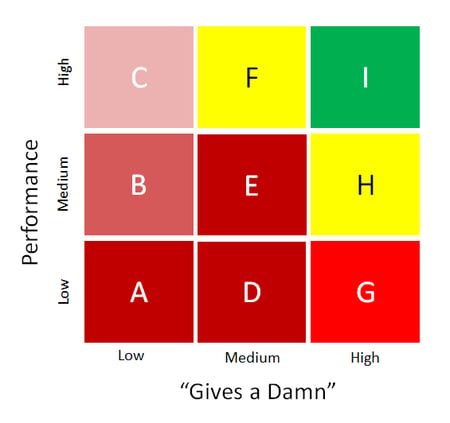
Our Subject Matter Expert (SME) was ten minutes early to our interview and sat quietly outside our room until exactly 2PM. Of the 15 interviews we conducted as part of the design of a new state-of-the-art Senior Manager Development program, he was the only person who was early. He came in, exchanged pleasantries, and sat confidently with a presence in the comfortable chair. Although his face showed signs of some weathering, and his beard was more grey than dark, there was a young, energetic gleam in his eyes.
“How can I help you today?” were his first official words when it was time to get down to business. I knew the next sixty minutes was going to be very enjoyable. This was an “old-schooler”; the type of leader I had grown up with and who believes in the “code” of giving the job everything that you have. Today, one of the hottest topics in leadership development is employee engagement. Leaders and HR professionals are trying to find ways of keeping employees motivated, the right work-life integration, providing flex time, paid leave, and new innovative ways of keeping employees happy. I kind of knew within a few minutes that the conversation we were about to have wasn’t going to include a lot of dialogue about the new “Zen room” that the company opened on the 10th floor.
“Fred” has been at the organization for 36 years. “I could have retired ten years ago and went to an island and lived happily ever after. Everyone knows my stock is worth over $25 million but I didn’t want to leave. I found an incredible and interesting niche here that makes me happy, our customers happy, and most importantly my wife happy. I am the ‘Super Sales Coach’ and focused exclusively on helping our inexperienced sales leaders develop their skills to build the teams they need to close the business that will help us hit our targets. I don’t have any direct reports and I really don’t report to anyone. If the sales leaders want me, they know where to find me as I usually sit in the lunch room or coffee room networking and talking with the other leaders when I am not on the road making sales calls. When I am on the road, my phone is on 24/7 because there is always a sales meeting happening somewhere in the world and someone always needs a little last minute coaching on how to engage in the right business dialogue with the customer.”
I explained to Fred that we are in the process of gathering insights from senior leaders about the best leadership practices they are using to create greater employee engagement so we can build a few scenarios into our new customized leadership simulation. Fred smiled politely and shared some interesting and provocative thoughts.
“I don’t buy all of nurturing and cajoling stuff. Employee engagement isn’t something leaders should be trained to do. That’s not their job. If leaders just hire people who give a damn, guess what? Everyone is engaged. I don’t have enough time left here to play around and wait for a bratty manager to learn how to be happy, engaged, and productive. Give me someone who gives a damn and I will make them more productive. I don’t have time to waste on anything else and this organization doesn’t have the time or money to waste on employees who shouldn’t be here because they don’t give a damn.”
The words were powerful and thought provoking.
Is talent management as simple as just hiring people who give a damn? Of course not, but Fred’s strong beliefs got me thinking and exploring this in more detail.
Based on the conversation with Fred, I developed a matrix that looks at the relationship between Performance and “Giving a Damn.” I shared it with a few of the “inside” HR leaders I speak with on a regular basis and the first thing that struck us is that you can have a high performer who doesn’t give a damn (Box C). One of our advisers who is also a client shared that this type of employee is the absolute worst and most frustrating. Another advisor shared that Box G was the most difficult; someone who really cares and tries hard but doesn’t perform well. Fred shared that he only will focus on develop leaders who fall into Boxes G, H, and I.

It is an interesting discussion and human capital management strategy to think about. After I developed the matrix, I went back to Fred for a discussion and further insights of what he would do.
Here are three key strategies for further discussion:
Box I – The High Performer Who Gives a Damn
This is the number one priority and where talent development investments in time and resources should go. This is Fred’s world.
Boxes A, D, and E – Low-to-Medium Performers Who Give a Medium Damn
These employees are not talent development priorities and most likely should be terminated from the company.
Box F and H
Try everything possible to move them to Box I through additional training, coaching, and mentoring.
In summary, all leaders and human resources professionals are always looking for new ideas and ways of thinking about leveraging human capital management to execute strategy. This tool provides a different way of thinking. Please use it and apply it and let us know your comments and thoughts!




